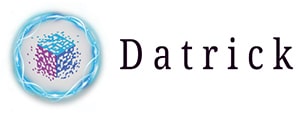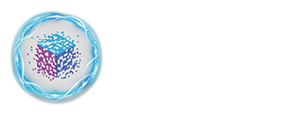
Open-Source ETL Tools and Frameworks
Open-source ETL tools give you total control over your data pipelines. They allow you to customize them to fit your specific needs. With so many different options available, it can be hard to know which one is best for your particular situation. But don’t worry – that’s what I’m here for!
In the following paragraphs, I’ll provide a comprehensive overview of all the key features of open-source ETL tools and frameworks. I’ll also outline their advantages and disadvantages.
So without further ado, let’s dive into the world of open-source ETL tools and frameworks!
Overview of Open-Source ETL Tools
I never expected my journey with open-source ETL tools and frameworks to be this exciting – or this challenging! From data replication across multiple cloud platforms, addressing scalability challenges, efficient processing of large datasets, and guaranteeing data quality assurance, it certainly is an adventure.
The world of open-source ETL has evolved rapidly over the past few years. Organizations are increasingly leveraging it as a preferred technology for their data transformation needs. We have seen tremendous growth in the adoption of open-source solutions. They offer greater flexibility, scalability, and cost savings compared to traditional on-premise software.
Cloud migration has been one of the biggest drivers of this trend. It provides organizations with secure access to mission-critical applications from anywhere in the world. With better control over resources and costs associated with running these systems, businesses are able to operate more efficiently. At the same time, they can also maintain higher standards of data quality assurance.
Apache Nifi
Apache NiFi is an open-source ETL tool and framework specifically designed to automate the dataflow between systems. It’s a powerful tool that can be used for workflow optimization, deployment considerations, and integration options. It can help you with your project needs.
The NiFi architecture has been created with scalability in mind. This allows it to easily handle large volumes of data while still providing reliable performance. Data can flow from one system to another quickly and securely due to its built-in security features like SSL/TLS encryption. Additionally, it provides detailed analytics so you can monitor your dataflows and identify any potential issues before they become problems.
Integrating Apache NiFi into your existing infrastructure is easy – there are several integrations options available such as REST APIs, JDBC drivers, FTPs, etc. These allow for seamless connections between different systems. Plus, it supports automation capabilities. So you don’t have to manually manage or update every process or task associated with the workflow. This allows organizations to save time and resources by streamlining their operations and ensuring everything runs smoothly.
Here are some key benefits of using Apache NiFi:
- Automating complex data flows with ease
- Securely transferring data between systems at scale
- Monitoring all processes in real-time
Using Apache NiFi makes managing large amounts of data simple and efficient; not only does it simplify the development process, but it also offers improved control over how information is shared across various systems within an organization’s network environment. The platform’s flexibility, combined with its wide range of features, makes it ideal for transforming raw datasets into meaningful insights. Ultimately making life easier for those who work with big data on a regular basis!
Talend
Talend is an open-source ETL tool and framework that’s built for high performance and reliability. Its architecture offers a lot of flexibility. You can customize it however you want or use existing templates from the community.
Plus, its API allows developers to create custom components quickly and easily scale their projects as needed.
Talend stands out when it comes to scalability. I’m always impressed by how fast processes run, even when dealing with large datasets. And thanks to its reliable nature, I never have any problems running multiple tasks at once without compromising performance.
The combination of features makes this one of the most powerful ETLs on the market today.
When it comes down to it, Talend is the go-to solution if you need something robust and easy to manage. No matter what your project demands, there’s no doubt that this platform will get the job done faster than any other option out there.
Apache Camel
Apache Camel is an open-source integration framework that enables developers to quickly and easily create complex ETL processes. It features a powerful routing engine, an integrated development environment (IDE), and numerous components for connecting different systems together. The camel architecture consists of routes configured using the Java-based Domain Specific Language (DSL). This makes it easy to build enterprise integration solutions without having to write any code.
The features provided by Apache Camel are impressive. Support for data transformation and validation is one of its primary strengths. Additionally, there are many components available such as connectors to popular databases like MySQL, PostgreSQL, and Oracle. These components can be used in conjunction with custom processors or transformers. These components can be used in order to perform transformations on incoming data before it reaches the destination system.
Deploying Apache Camel involves creating a project structure that defines how each component will interact with each other during runtime. Once this has been done, all that’s left is to configure the routes according to the specific requirements of your ETL process. The routes are configured according to the specific requirements of your ETL process.
Benefits include:
- scalability due to its modular design
- extensibility through various plugins and adapters
- high performance thanks to its asynchronous processing capabilities
- robustness from sophisticated error handling mechanisms.
Kettle (Pentaho Data Integration)
Kettle, the open-source ETL tool and framework, is like a powerful engine. It works tirelessly to process, transform, and load all of your data quickly and efficiently.
With features that provide robust scalability, security, architecture, and more. Kettle can help you reach new heights with your ETL operations.
The benefits of using Kettle are many. Its secure encryption capabilities keep your data safe from any malicious actors. Its scalability easily adapts when the size or scope of your data changes. Additionally, its intuitive architecture makes it easy for users to build pipelines in an efficient manner.
Kettle gives users total control over their ETL processes. Users don’t have to worry about time-consuming manual tasks or outdated solutions. This allows them to be agile and responsive to changing business needs.
Streamsets Data Collector
Having just discussed Kettle (Pentaho Data Integration), it’s time to move on to StreamSets Data Collector. It is another open-source ETL tool used for data integration. This platform offers an ideal choice for streamlining the flow and processing of large datasets.
One of the core benefits of using Streamsets is its architecture. This architecture allows users to build complex pipelines quickly and efficiently. It supports both batch-oriented as well as real-time pipeline architectures. It offers unparalleled flexibility when tackling any sort of data streaming project.
Additionally, installation is simple and straightforward, allowing anyone with basic technical knowledge to get started in no time at all.
Customization too is easy with this platform, thanks to features like visual interface debugging tools. Its library contains custom processors and originators and built-in components.
Moreover, Streamsets also provides robust security protocols such as encryption/decryption algorithms and access control options. Streamsets ensures that every component is secure from external threats or malicious attacks.
Logstash
Logstash is an open-source ETL tool and framework that provides powerful performance, scalability, and flexibility in the cloud. It’s designed to help you manage structured or unstructured data from a variety of sources, including relational databases, NoSQL stores, web applications, message queues, and log files.
Logstash simplifies the complex task of aggregating, processing, transforming, and loading large amounts of data into target systems for analysis. With its ease-of-use features, such as drag-and-drop pipelines, custom filters, and output configurations, it makes this process easy for users with even minimal technical knowledge.
The benefits of using Logstash are numerous: it can easily handle massive volumes of data quickly; it supports multiple input and output formats; it has built-in support for various cloud services like Amazon Redshift, Microsoft Azure Storage Blob & HDInsight; it allows you to customize your ETL processes according to your specific requirements; plus it gives developers access to both realtime streaming capabilities as well as batch processing options.
This means Logstash offers unparalleled flexibility when compared to other open-source ETL tools and frameworks – making it ideal for any organization looking to leverage its existing infrastructure while leveraging newer technologies like big data analytics or machine learning. Additionally, its dynamic nature enables users to effectively adapt their workflows based on changing business needs without having to worry about system downtime or compatibility issues.
Apache Kafka Connect
Apache Kafka Connect is an open-source ETL tool and framework that allows users to move data between different systems in a secure and reliable way. As the adoption of Apache Kafka continues to grow, more companies are turning to Kafka Connect as a solution for their data integration needs.
In this section, we’ll discuss some of its key features, use cases, benefits, and architecture. Kafka Connect Use Cases make it ideal for connecting streaming pipelines with enterprise systems or applications such as databases, message queues, or file-based storage systems. It can be used to create real-time event streams from legacy systems like Salesforce or SAP ERP solutions, process large batches of records quickly and reliably, migrate existing on-premises applications into cloud environments, and more.
Additionally, security features such as authentication and authorization help ensure only authorized users have access to sensitive data stored in the system. The advantages offered by Apache Kafka Connect include scalability, flexibility, and low latency performance. Its distributed nature means that it can efficiently scale up as needed without introducing any additional complexity in terms of managing resources or infrastructure costs.
Furthermore, its modular design makes it easy to customize for specific business requirements so organizations can tailor solutions according to their individual needs. Finally, thanks to its efficient asynchronous processing model it offers lower latency than traditional batch ETL tools making it suitable even for time-sensitive tasks where maximum throughput is essential.
In summary, Apache Kafka Connect provides powerful yet simple solutions for extracting data from various sources while ensuring high levels of security at the same time. Thanks to its wide range of use cases, robust architecture and low latency performance, it’s become increasingly popular among organizations looking for ways to integrate disparate systems in a cost-effective manner.
Singer ETL
As the saying goes, ‘A singer in the choir is worth two on a stage’. Singer ETL is an open-source ETL tool that helps users access data from multiple sources and provide efficient data transformation. It offers flexibility to create automated pipelines of data between different systems with ease.
Here’s what you need to know about Singer:
- Singer Capabilities – Singer provides powerful capabilities such as complex transformations, real-time replication, scheduling jobs, and generating metrics.
- Singer Architecture – Singer has a modular architecture that allows for extendability across various endpoints. The core components include input connectors, output connectors, and transforms (ETL).
- Singer Use Cases – With its wide range of features, Singer can be used for creating custom applications such as financial dashboards or integrating CRM systems into analytics platforms. Additionally, it can also be used for log aggregation, user tracking & clickstream analysis.
When considering tools like Singer for your projects, other alternatives should also be taken into consideration, such as Airflow, Talend Open Studio, and Pentaho Data Integration Toolkit. However, compared to these ETL frameworks, Singer stands out due to its unmatched performance and scalability.
Conclusion
As an open-source ETL tools and frameworks expert, it’s clear to me that there are many great options out there for organizations looking to take advantage of this technology. Each tool has its own unique features and capabilities, so depending on the specific needs of your organization, you can find one that will fit like a glove.
As they say, ‘one size does not fit all,’ so make sure you carefully evaluate each option before settling on one.
In conclusion, I believe these open-source ETL tools can provide tremendous value in terms of cost savings, expanded functionality, and scalability – making them an excellent choice for businesses large or small.

